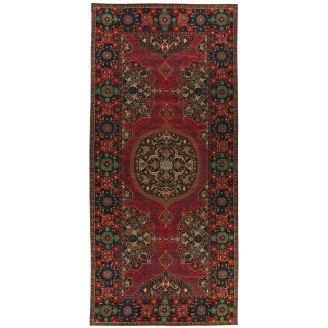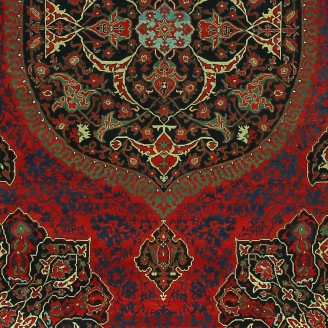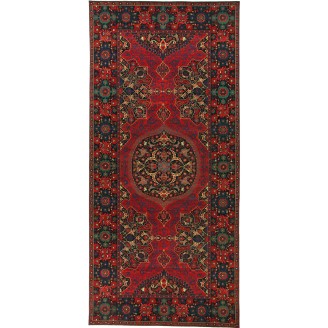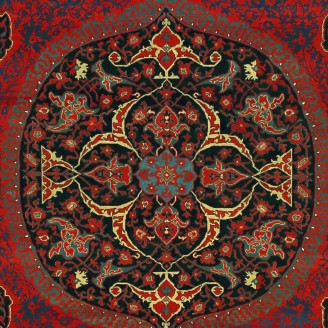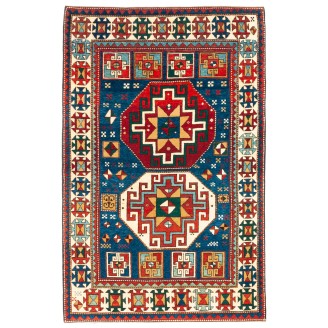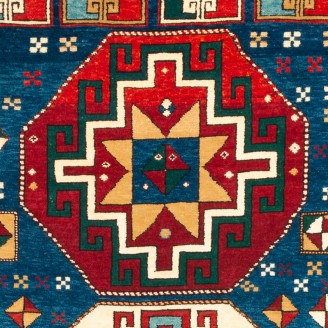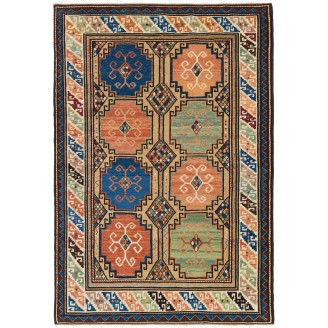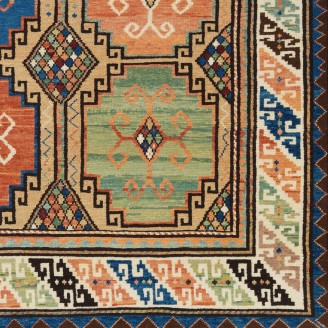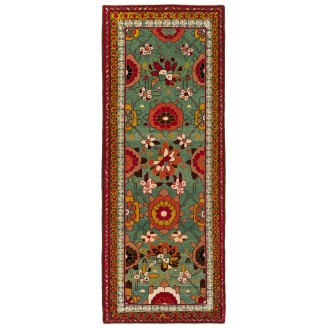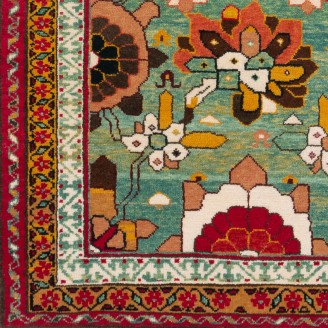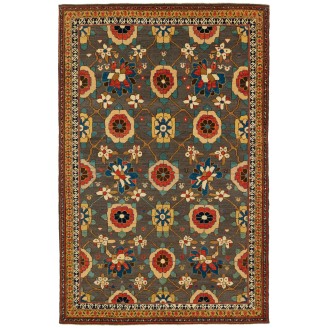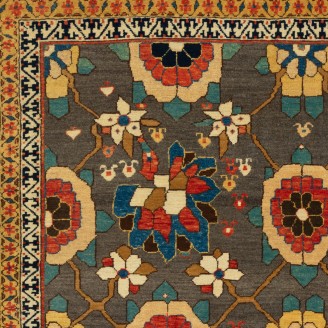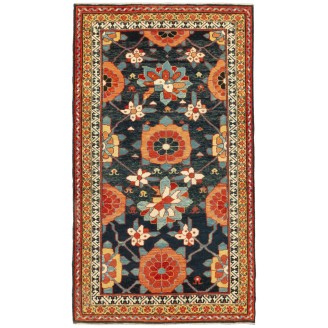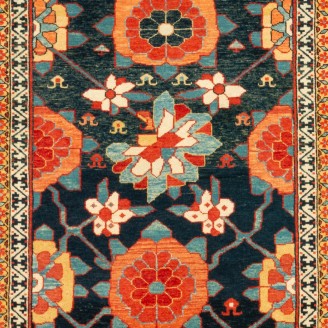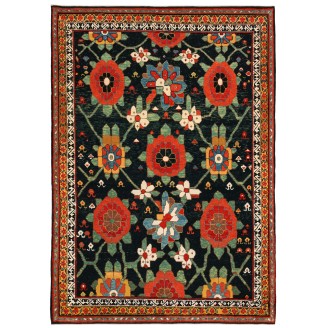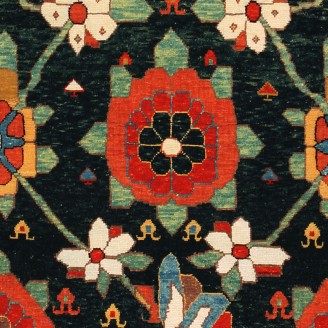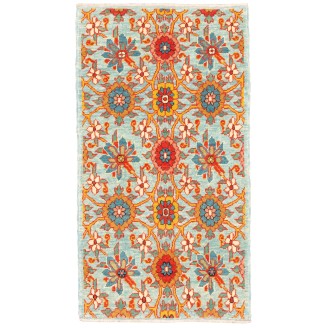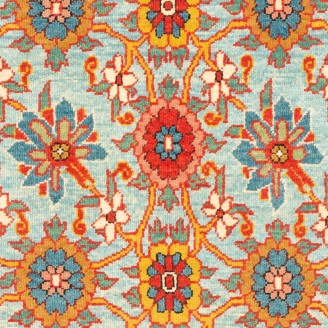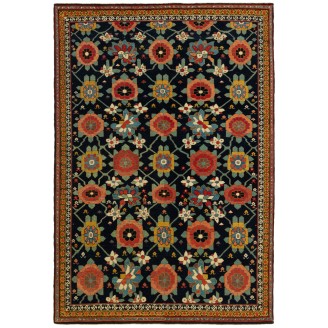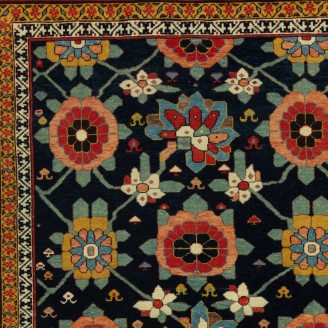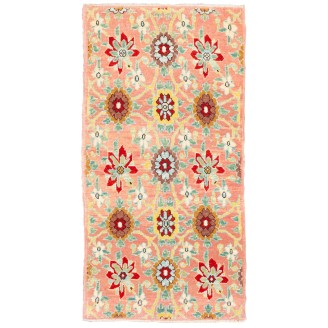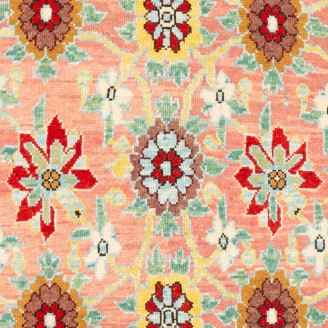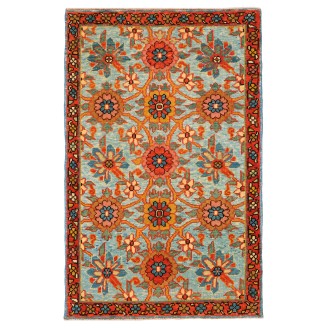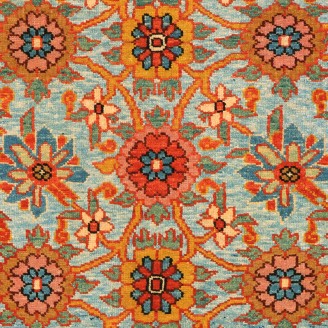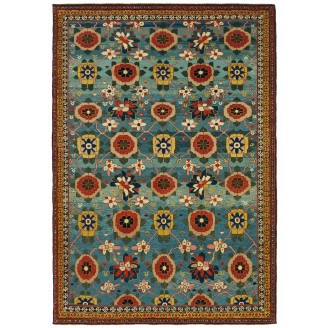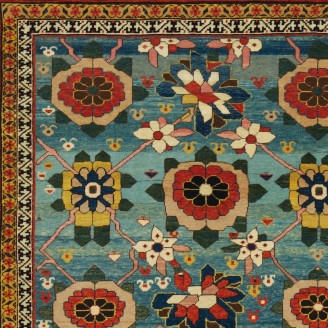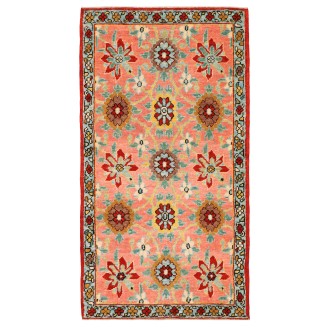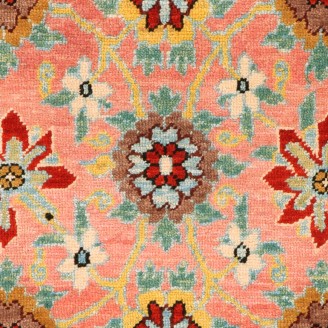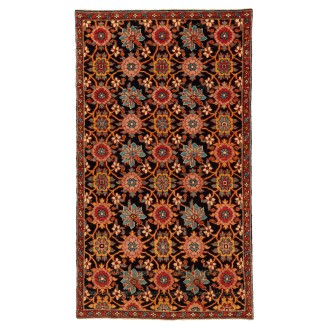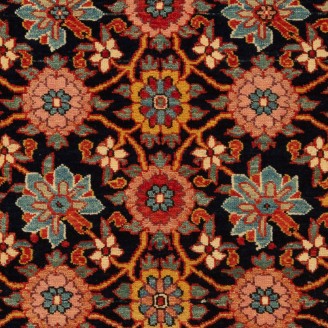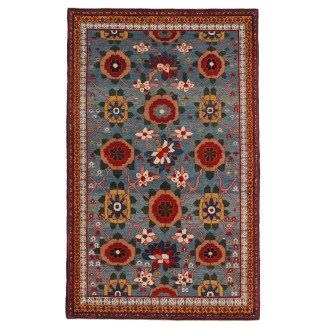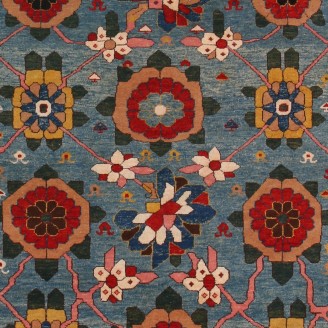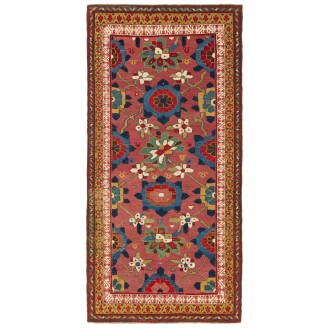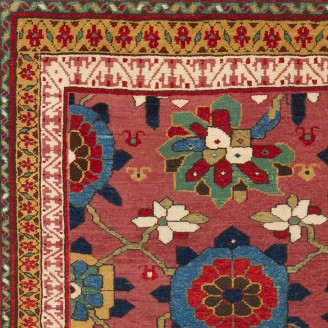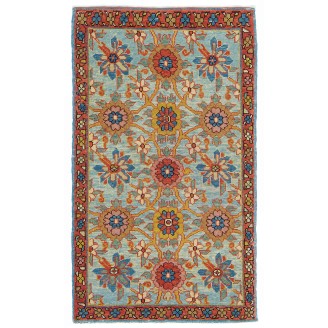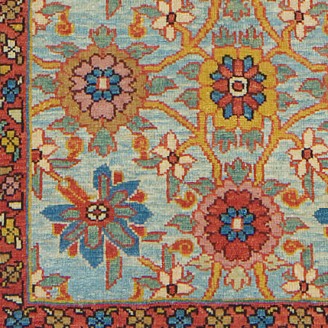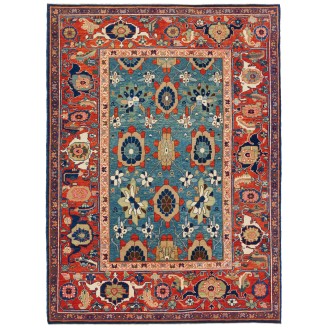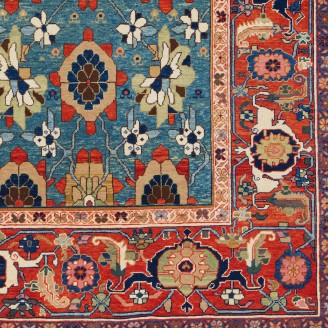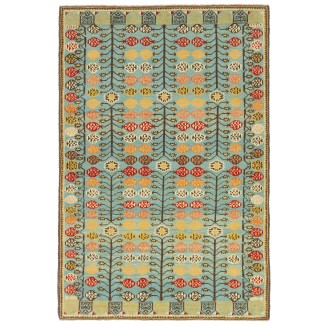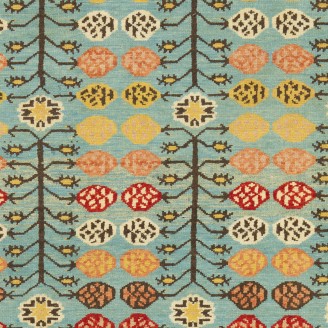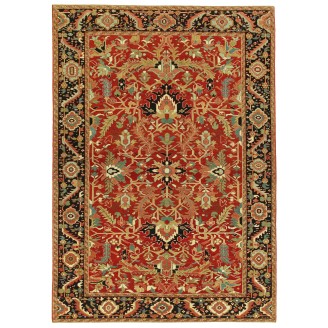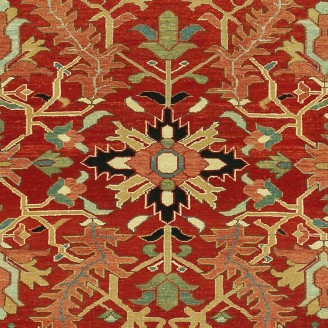Model: ARTW0025
Dimensions: 11'6" X 24'11"(352cm x 760cm)
The source of the carpet comes from the book How to Read – Islamic Carpets, Walter B. Denny, The Metropolitan Museum of Art, New York 2014 fig.58 and Antique Rugs from the Near East, Wilhelm von Bode and Ernst Kühnel, Klinkhardt & Biermann, Berlin 1958, pg.40 and Oriental Carpets in the Museum of Is..
Price:
$0
Ex Tax:$0
Model: ARTW0022
Dimensions: 11'6" X 24'9"(351cm x 755cm)
The source of the carpet comes from the book How to Read – Islamic Carpets, Walter B. Denny, The Metropolitan Museum of Art, New York 2014 fig.58 and Antique Rugs from the Near East, Wilhelm von Bode and Ernst Kühnel, Klinkhardt & Biermann, Berlin 1958, pg.40 and Oriental Carpets in the Museum of Is..
Price:
$0
Ex Tax:$0
Model: ART00426
Dimensions: 4'11" X 7'6"(150cm x 230cm)
The source of the rug comes from the book Oriental Rugs Volume 1 Caucasian, Ian Bennett, Oriental Textile Press, Aberdeen 1993, nr.67 and Caucasian Carpets, E. Gans-Reudin, Thames and Hudson, Switzerland 1986, pg.68. This is a very popular Kazak design with the Memling ( Memlinc ) güls within octago..
Price:
$3,900
Ex Tax:$3,900
Model: ART00430
Dimensions: 4'3" X 6'1"(130cm x 186cm)
The source of the rug comes from the book Tapis du Caucase - Rugs of the Caucasus, Ian Bennett & Aziz Bassoul, The Nicholas Sursock Museum, Beirut, Lebanon 2003, nr.24 and Oriental Rugs Volume 1 Caucasian, Ian Bennett, Oriental Textile Press, Aberdeen 1993, nr.68 and Caucasian Carpets, E. Gans-R..
Price:
$2,700
Ex Tax:$2,700
Model: ART00455
Dimensions: 2'9" X 7'0"(84cm x 214cm)
The source of the rug comes from the book Antique Rugs of Kurdistan A Historical Legacy of Woven Art, James D. Burns, 2002 nr.4. This was an exclusive example of a Mina Khani lattice design mid-19th century rug from Koliya'i, Southern Kurdistan area. The mina khani is composed of a series of rows of..
Price:
$3,300
Ex Tax:$3,300
Model: ART00508
Dimensions: 4'8" X 7'1"(143cm x 217cm)
The source of the rug comes from the book Antique Rugs of Kurdistan A Historical Legacy of Woven Art, James D. Burns, 2002 nr.4. This was an exclusive example of a Mina Khani lattice design mid-19th century rug from Koliya'i, Southern Kurdistan area. The mina khani is composed of a series of rows of..
Price:
$6,200
Ex Tax:$6,200
Model: ART00274
Dimensions: 2'7" X 4'7"(80cm x 140cm)
The source of the rug comes from the book Antique Rugs of Kurdistan A Historical Legacy of Woven Art, James D. Burns, 2002 nr.4. This was an exclusive example of a Mina Khani lattice design mid-19th century rug from Koliya'i, Southern Kurdistan area. The mina khani is composed of a series of rows of..
Price:
$1,950
Ex Tax:$1,950
Model: ART00219
Dimensions: 4'1" X 5'9"(125cm x 176cm)
The source of the rug comes from the book Antique Rugs of Kurdistan A Historical Legacy of Woven Art, James D. Burns, 2002 nr.4. This was an exclusive example of a Mina Khani lattice design mid-19th century rug from Koliya'i, Southern Kurdistan area. The mina khani is composed of a series of rows of..
Price:
$0
Ex Tax:$0
Model: ART00207
Dimensions: 1'7" X 2'11"(50cm x 89cm)
The source of the rug comes from the book Antique Rugs of Kurdistan A Historical Legacy of Woven Art, James D. Burns, 2002 nr.2. This was an exclusive example of a Mina Khani lattice design c. 1800s rug from Koliya'i, Southern Kurdistan area. The mina khani is composed of a series of rows of aster f..
Price:
$825
Ex Tax:$825
Model: ART00562
Dimensions: 5'8" X 8'3"(174cm x 253cm)
The source of the rug comes from the book Antique Rugs of Kurdistan A Historical Legacy of Woven Art, James D. Burns, 2002 nr.4. This was an exclusive example of a Mina Khani lattice design mid-19th century rug from Koliya'i, Southern Kurdistan area. The mina khani is composed of a series of rows of..
Price:
$8,900
Ex Tax:$8,900
Model: ART00208
Dimensions: 1'7" X 3'1"(50cm x 95cm)
The source of the rug comes from the book Antique Rugs of Kurdistan A Historical Legacy of Woven Art, James D. Burns, 2002 nr.2. This was an exclusive example of a Mina Khani lattice design c. 1800s rug from Koliya'i, Southern Kurdistan area. The mina khani is composed of a series of rows of aster f..
Price:
$825
Ex Tax:$825
Model: ART00186
Dimensions: 1'9" X 2'9"(55cm x 86cm)
The source of the rug comes from the book Antique Rugs of Kurdistan A Historical Legacy of Woven Art, James D. Burns, 2002 nr.2. This was an exclusive example of Mina Khani lattice design c. 1800s rug from Koliya'i, Southern Kurdistan area. The mina khani is composed of a series of rows of aster flo..
Price:
$825
Ex Tax:$825
Model: ART00515
Dimensions: 5'8" X 8'0"(173cm x 245cm)
The source of the rug comes from the book Antique Rugs of Kurdistan A Historical Legacy of Woven Art, James D. Burns, 2002 nr.4. This was an exclusive example of a Mina Khani lattice design mid-19th century rug from Koliya'i, Southern Kurdistan area. The mina khani is composed of a series of rows of..
Price:
$8,960
Ex Tax:$8,960
Model: ART00209
Dimensions: 1'10" X 3'4"(56cm x 103cm)
The source of the rug comes from the book Antique Rugs of Kurdistan A Historical Legacy of Woven Art, James D. Burns, 2002 nr.2. This was an exclusive example of a Mina Khani lattice design c. 1800s rug from Koliya'i, Southern Kurdistan area. The mina khani is composed of a series of rows of aster f..
Price:
$825
Ex Tax:$825
Model: ART00382
Dimensions: 2'5" X 4'3"(74cm x 130cm)
The source of the rug comes from the book Antique Rugs of Kurdistan A Historical Legacy of Woven Art, James D. Burns, 2002 nr.2. This was an exclusive example of a Mina Khani lattice design mid-19th century rug from Koliya'i, Southern Kurdistan area. The mina khani is composed of a series of rows of..
Price:
$1,700
Ex Tax:$1,700
Model: ART00306
Dimensions: 4'0" X 6'4"(124cm x 195cm)
The source of the rug comes from the book Antique Rugs of Kurdistan A Historical Legacy of Woven Art, James D. Burns, 2002 nr.4. This was an exclusive example of a Mina Khani lattice design mid-19th century rug from Koliya'i, Southern Kurdistan area. The mina khani is composed of a series of rows of..
Price:
$4,500
Ex Tax:$4,500
Model: ART00454
Dimensions: 2'9" X 5'6"(84cm x 170cm)
The source of the rug comes from the book Antique Rugs of Kurdistan A Historical Legacy of Woven Art, James D. Burns, 2002 nr.4. This was an exclusive example of a Mina Khani lattice design mid-19th century rug from Koliya'i, Southern Kurdistan area. The mina khani is composed of a series of rows of..
Price:
$2,300
Ex Tax:$2,300
Model: ART00185
Dimensions: 1'9" X 3'0"(55cm x 93cm)
The source of the rug comes from the book Antique Rugs of Kurdistan A Historical Legacy of Woven Art, James D. Burns, 2002 nr.2. This was an exclusive example of a Mina Khani lattice design c. 1800s rug from Koliya'i, Southern Kurdistan area. The mina khani is composed of a series of rows of aster f..
Price:
$825
Ex Tax:$825
Model: ART00507
Dimensions: 5'0" X 6'9"(154cm x 207cm)
The source of the rug comes from the book Antique Rugs of Kurdistan A Historical Legacy of Woven Art, James D. Burns, 2002 nr.4. This was an exclusive example of a Mina Khani lattice design mid-19th century rug from Koliya'i, Southern Kurdistan area. The mina khani is composed of a series of rows of..
Price:
$6,280
Ex Tax:$6,280
Model: ART00421
Dimensions: 3'9" X 5'6"(115cm x 170cm)
This is a popular design employed by the Turks, a 17th-century rug from Turkey, Central Anatolia area. Stylized pomegranate trees with flowers and fruits, many diverse colored floral figures on a blue ground with both ends prayer arch (mihrab) design whose inner fields are covered with flowering pla..
Price:
$2,300
Ex Tax:$2,300
Model: ARTW0004
Dimensions: 8'11" X 12'6"(274cm x 383cm)
This offset pattern is composed of ascending flowers, shield-like palmettes flanked by leaf-like wings designed for 19th-century rugs from the Heriz region, the North-west Persia area. Very similar palmettes, drawn in a curvilinear manner and combined with identical forked leaves, can be seen on a f..
Price:
$0
Ex Tax:$0
